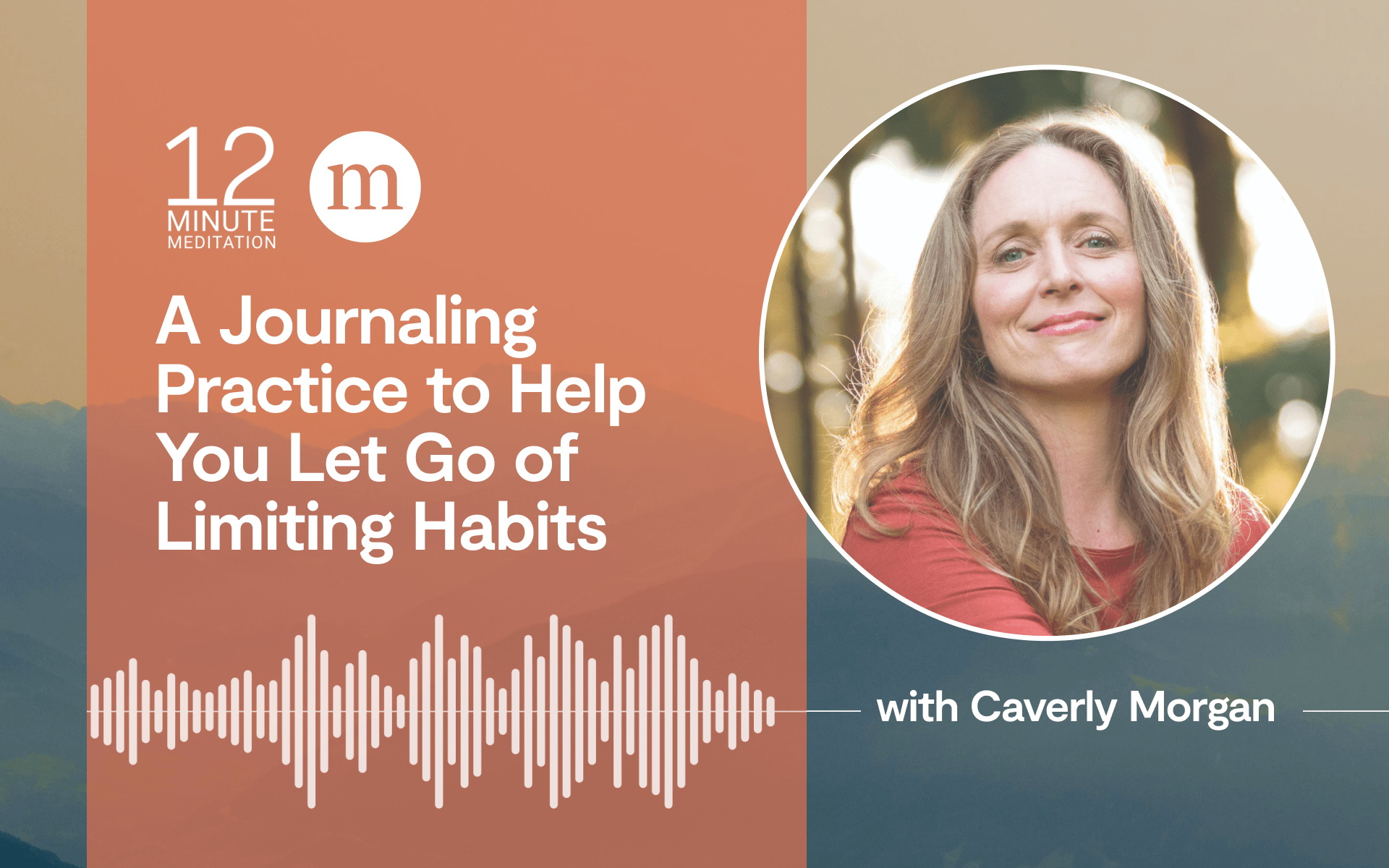In a world that feels uncertain, chaotic, and often disconnected, people are seeking greater peace, clarity, and emotional balance. In that searching, many have found respite and healing in a regular meditation practice. However, if you’re brand new to meditating, it can be a little intimidating at first. Where do you begin? Are there foundational guidelines or rules of meditation that should be followed?
While there are many forms of meditation, some core principles guide successful practice. These principles act as a springboard to help you navigate your meditation journey more effectively. Whether you’re new to meditation or a seasoned practitioner, understanding these “8 rules of meditation” can deepen your practice and enhance its benefits.
And, if you read to the end, we’ve included a final guideline that might surprise you—and that might be the most important thing to remember as you explore the challenges and rewards of meditation.
Let’s dive into these key principles to discover how they can enrich your meditation experience.
1. Find a Comfortable Posture
One of the first and most important rules of meditation is finding a comfortable, stable posture. While many people envision sitting cross-legged on the floor, the truth is that meditation posture can vary. You don’t have to twist into complicated poses to meditate effectively.
The key is to find a position where your body feels supported and relaxed. That can be sitting on a chair, cushion, or even lying down. In fact, it can be a useful practice to simply tune into your body before each meditation session and determine which position might be the most comfortable for that day. This is a gentle way to start focusing your attention.
If you choose to sit, either in a chair, on the floor, or against a wall, remember to:
- Keep your spine straight to encourage alertness.
- Relax your shoulders and let your hands rest naturally.
- Ensure you are not straining any part of your body.
Comfort is key because physical discomfort can easily become a distraction during your practice. By settling into a comfortable posture, you allow your mind to focus more easily.
2. Focus on Your Breath
You’ll hear meditation teachers speak a lot about the power of the breath.
This is because the breath is a natural anchor for meditation. It’s always with you and can be observed without a lot of effort. Focusing on your breath helps quiet the mind and center your awareness in the present moment. This rule of meditation teaches you to tune into your body, observing how the breath moves in and out, without trying to control it.
When meditating, pay attention to the sensation of air entering and leaving your nostrils or the rise and fall of your abdomen. If your mind wanders—which it inevitably will—gently bring your attention back to the breath. This act of returning to the breath is a key part of meditation, strengthening your mental focus.
3. Accept What Arises Without Judgment
A common misconception is that a quiet mind is the goal of meditation, but the reality is that thoughts will always arise. It’s not possible for meditation to be about controlling or suppressing your thoughts, because producing thoughts is just what the brain does.
That’s why much of the work of meditation is just learning to accept whatever arises in your mind without judgment. Whether it’s stress, irritation, or joy, let the thoughts and feelings come and go like clouds passing through the sky. That can look like gently saying to yourself something like, I notice I’m thinking about work right now. I have a lot of worries about my job right now. That’s okay. I can think about work later, but right now, I’m choosing to return to the present.
The key here is non-resistance. Instead of fighting your thoughts, simply observe them. Recognize that thoughts are fleeting and don’t define who you are. Over time, you’ll learn how to detach from the endless stream of thoughts and emotions, allowing them to pass without becoming consumed by them.
And remember that when your attention wanders and you bring it back, that is similar to doing a rep with a weight. The wandering and coming back is not a “failure”—it’s precisely what builds strength in your focus and attention over time.
4. Practice Regularly
Consistency is crucial in meditation. As we mentioned above, strengthening focus and attention is like any skill: the more you practice, the more you’ll benefit. It’s better to meditate for a few minutes every day than for an hour once a week. Regular practice builds mental discipline and helps integrate mindfulness into your daily life.
Start small if you’re new to meditation—perhaps with just five minutes a day—and gradually increase your time. Find a routine that works for you, whether it’s in the morning, during lunch, or before bed. The important thing is to establish a habit and stick to it. Even short, regular sessions will lead to noticeable improvements in your focus, clarity, and emotional regulation.
5. Be Patient with Yourself
As you might imagine, and perhaps have already experienced for yourself, frustration is a very normal part of starting and maintaining a meditation practice.
Meditation is a journey, not a destination. In Western culture especially, we’re training to approach everything as if it’s something to be perfected or conquered. It can be extremely strange to engage in a lifelong activity where “mastering” it isn’t the goal.
It’s normal to experience challenges, especially in the beginning. Your mind may feel restless, your body may feel almost unbearably uncomfortable at times, and might be surprised and annoyed by what pops into your head when you’re just trying to be still for a second. It’s easy to get discouraged when progress seems slow. This brings us to one of the most important rules of meditation: patience.
Understand that meditation is a practice of observing the mind and its patterns. There will be good days where meditation feels effortless, and there will be days when your mind seems like a chaotic storm. Both experiences are part of the process and both are completely normal. Patience means accepting where you are today without judgment. Trust that with time and consistency, the benefits of meditation will reveal themselves.
6. Let Go of Expectations
A common pitfall in meditation is having expectations about what “should” happen. Many people sit down expecting immediate calm, profound insights, or even emotional or spiritual awakenings. When those expectations aren’t met, disappointment and frustration can follow. One of the core rules of meditation is to let go of expectations.
Meditation is not about achieving a specific outcome but about being present with whatever arises. You might experience moments of peace, and at other times, you might face discomfort or boredom. The practice is about accepting each moment as it is without trying to manipulate the experience. By letting go of expectations, you create space for authentic, unfiltered awareness.
7. Think of Mindfulness as Not Just an Activity, but An Approach to All of Life
Meditation is not confined to your time on the cushion. One of the most powerful benefits of meditation is the ability to bring mindfulness into your everyday life. Meditation is one exercise that helps you stay aware and present in one particular moment, so that you can stay aware and present throughout the day, no matter what you’re doing.
Whether you’re eating, walking, working, or talking, try to bring mindful awareness to the present moment. Notice how your body feels, observe your surroundings, and pay attention to your thoughts and emotions without getting lost in them.
More good news? This is all a virtuous cycle: staying mindful during everyday activities deepens your meditation practice, which in turn helps to cultivate a sense of peace and clarity that extends out into all the little moments of your beautiful, imperfect human life.
8. Allow Your Sense of Compassion to Grow
One of the many side benefits of a regular meditation practice is an expanded capacity to hold compassion—for yourself and others. Meditation is not just about focusing the mind; it’s also about opening the heart. As you observe your thoughts and emotions, practice self-compassion. Recognize that it’s okay to struggle and be kind to yourself when things get tough.
Likewise, extend that compassion to others. Over time, meditation helps you develop a sense of interconnectedness with the world around you. By practicing loving-kindness meditation or simply holding an attitude of empathy, you foster compassion for all beings. This rule reminds us that meditation is not just a personal practice but a way to connect with others and contribute to the well-being of the world.
Like the rest of these rules of meditation, there is a kind of counter-intuitive and cyclical nature to expanding compassion. The more we make room for imperfection and mistakes in our meditation practice, the stronger our practice will become over time. The less we put pressure on ourselves to always “get it right”—and judge ourselves by a standard of perfection—the more room we have the ability to extend that grace to ourselves and others in the rest of our lives.
A Final Rule: Hold All the Rules of Meditation Lightly
Mindfulness and meditation are counter-cultural in so many ways.
For example:
- Rather than a predetermined destination or outcome, we’re invited to relax into an unpredictable process.
- Rather than fixating on achievement, we’re invited to let go of our grip on staking our identity and value on perfection.
- Rather than trying to “fix” the feelings we don’t like, we’re invited to just be with them, and then we find that they pass through a lot faster.
When we see a phrase like “the eight rules of meditation,” it’s easy to slip into thinking about this process the way we think about so many things in life: through the lens of striving, achievement, mastery, and perfection. We can get attached and rigid—and that actually makes growing in the process more difficult.
So, in the end, here’s a final invitation: hold all of the rules of meditation lightly. Lean into them for support, guidance, and encouragement. Allow them to be gentle reminders of why you’re here.
But also remember that there is so much room for every day to be different. Some days will feel amazing, and some won’t, and that’s okay. It’s all part of the experience, and even the days when it feels like it’s not working…it’s still working.
Meditation is a journey, and each time you practice, you take a step closer to greater self-awareness and inner peace. Whether you’re just starting or have been meditating for years, these guidelines can serve as a compass to help you navigate your path with a little more awareness and grace.
FAQs About the Rules of Meditation
Q: What if sitting is uncomfortable or painful for me?
A: The key is finding a position that works for you and your body’s needs. If sitting with your legs crossed is hard on your knees, for example, you can sit in a chair with your feel on the floor. It’s fine to lie down, as well. It can be a useful practice to simply tune into your body before each meditation session and determine which position might be the most comfortable for that day. This is a gentle way to start focusing your attention on your body and your breath before you even officially start your practice.
Q: I can’t seem to keep my thoughts from racing in every direction. Is this normal?
A: Yes, it’s completely normal! The mind does what it does: it generates thoughts, feelings, reactions, stories. That’s its job. You might find your mind wandering dozens of times in just the span of five or 10 minutes. Be patient with yourself, and be aware of how you respond to this very natural movement of the mind. Instead of harshly criticizing yourself, try noticing, thanking your mind for doing its thing, and then bringing your attention back to the breath. Each time you return your attention to the present moment, think of it like lifting a weight—you’re actually strengthening your focus each time your bring it back.
Q: It doesn’t feel like my practice is really doing anything for me, even though I’m following the rules of meditation for the most part. How do I know if a practice is “working”?
A: It can be super frustrating to start a practice and to hope to see and feel big results right away. The truth is, learning to meditate takes time, and most often the changes aren’t sudden or dramatic.
One key way to notice shifts as a result of your practice is just to pay attention to how you respond to discomfort or disappointment. You might start to be aware that you’re less reactive, that you have just a moment between when something happens and when you respond that wasn’t there before. Or maybe you notice your inner dialogue shifting—maybe you’re more patient with yourself or others, maybe a little less critical when you make mistakes. You might notice that your focus is sharper, that you see and appreciate “little things” a bit more. Again, it might not be dramatic, but part of a mindfulness practice is becoming more aware of micro-changes in yourself over time.




